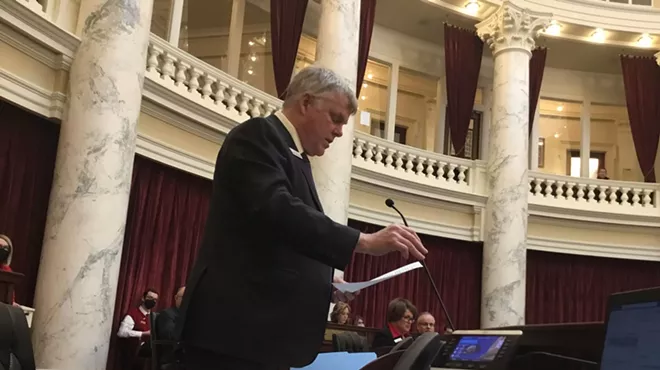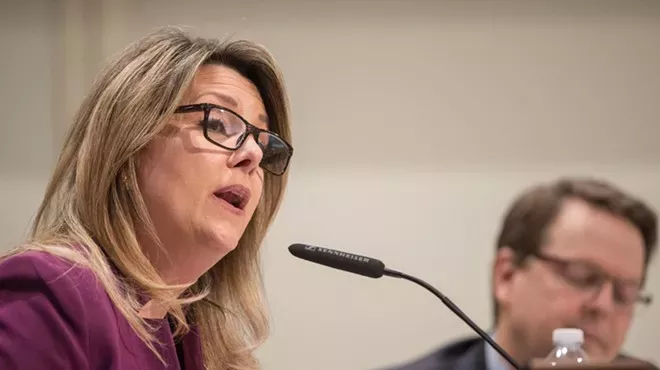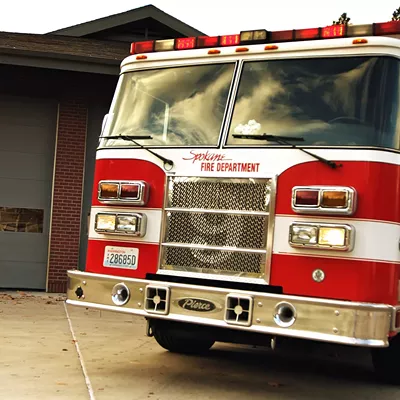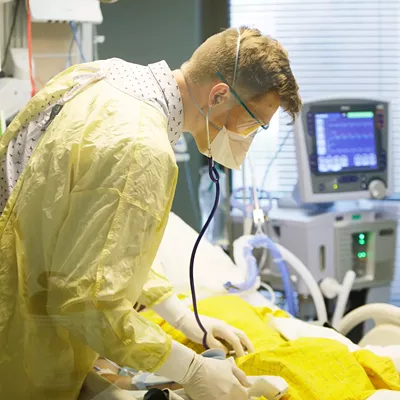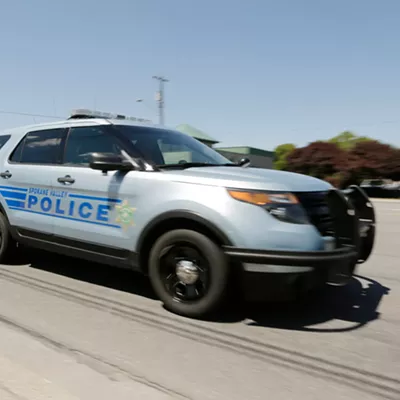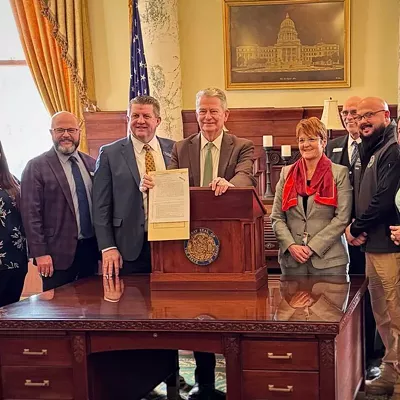Amidst the ongoing COVID-19 pandemic, Idaho Gov. Brad Little wants to reopen the state's economy in the coming weeks after enacting a shut-down order in late March. But some experts argue that the move could result in a surge of infections and that more COVID-19 testing is needed.
On Thursday, Little unveiled his tentative game plan to gradually reopen the state over the next eight weeks. He cited the relatively low number of daily reported COVID-19 cases as evidence that his stay-home order is working to limit transmission of the disease. Currently, there are roughly 1,700 confirmed cases in Idaho, while 54 people have died from the virus.
"With the statewide stay-home order, after community spread began in multiple places in Idaho, we eventually saw those numbers to start to level off as everyone did their part to limit their exposure to others," Little says. "Our efforts are working to flatten the curve."
"The fact that we’re still picking up a relatively high percentage of positive [tests] suggests to me that the virus is still moving pretty actively in our community."
"Our efforts to slow the spread have worked so well, in fact, that we have entered a new chapter, a very welcome chapter, in the story of our fight with the spread of this deadly disease: a staged reopening of Idaho’s economy is underway in Idaho," he adds.
Here's what the governor wants to do: Starting on May 1, places of worship will be allowed to open so long as they adhere to social distancing guidelines. Similarly, daycares will also be permitted to operate. Most other businesses, like bars and restaurants, will remain closed. (Residents who are vulnerable to COVID-19 will be encouraged to continue to self-quarantine.)
On May 16, restaurants can open dining rooms if their safety protocol plans are accepted by their local public health district. Gyms and hair salons will also be able to open if they can follow proper protocols. Next, on May 30, vulnerable Idahoans can resume public interactions and both public and private gatherings of 10 to 50 people will be allowed (if social distancing protocols are followed). Finally, on June 13, bars and nightclubs can reopen with reduced standing-room capacity and large venues (like movie theaters and stadiums) can operate with social distancing protocols. Visitation at senior living facilities and jails will also resume.
Little stresses that state officials will be reassessing the measures and reviewing epidemiological data every two weeks before moving into the next phase of his reopening plan.
"Opening Idaho at the right pace is critical and the plan we are laying out will give consumers, employers and employees a concrete path back to prosperity," he says. "We are making decisions two weeks at a time to make sure our actions are appropriate and won’t result in a spike of severe cases and set us back."
The move follows criticism of Little's order. An anti-vaccination activist staged a protest against the order in a Meridian park on Tuesday while the Lt. Gov. Janice McGeachin, his second-in-command, criticized the lockdown measures. Some businesses have also re-opened in violation of the stay-home order.
But Karen Yao, a Coeur d'Alene-based virologist, argues that state officials aren't running enough tests to really know the extent of the COVID-19 outbreak in Idaho. Idaho ranks seventh among western states — including Washington and Montana — in its testing rate, while its rate of positive tests is around 9 percent, according to the Idaho Statesman. By comparison, Washington's positive test rate is around 8 percent. (Idaho has also experienced problems in reporting cases accurately as well as testing hang-ups and delays.)
"The reason we’re not picking up more [cases] is because we’re not running new tests. That needs to be resolved," Yao tells the Inlander. "The fact that we’re still picking up a relatively high percentage of positive [tests] suggests to me that the virus is still moving pretty actively in our community."
"In order to be able to open up the country, we have to increase the testing capability by at least three-fold to be able to catch all the infections," she adds. "The reason we’re not picking up more is because we’re not running new tests. That needs to be resolved."
When asked if Idaho's case numbers would spike if Little moved ahead with his reopening measures, Yao says: "I don’t think there’s any question that a surge would happen."
But Tommy Ahlquist, a former emergency room doctor, developer, and recent co-founder of Crush the Curve Idaho, told the Inlander last week that he thinks Idaho is in a good position to re-open. He says that their private initiative has the ability to test "18,000 people for antibodies in the next week" and that the state is not maximizing the number of tests it could be running every day.
Last Thursday, labs running COVID-19 tests for Idaho returned 999 tests, the highest daily number since April 4, according to the Idaho Statesman. In the previous week, no more than 576 tests were returned on a daily basis. In contrast, Washington is currently running around 4,000 tests per day. Washington Gov. Jay Inslee argues this testing rate is far too low.
Yao says that while Gov. Little's posture of wanting to evaluate the reopening strategy every two weeks is admirable, without significantly ramping up testing capacity, the risk of a renewed spike in cases is significant.
"Without plans to increase testing so that we can actually know what is going on with the virus spread, it’s quite risky," she says. "The question we should be keeping in mind is how prepared are we for the next surge? I think it’s no doubt that it will happen. But are we ready for it?"




